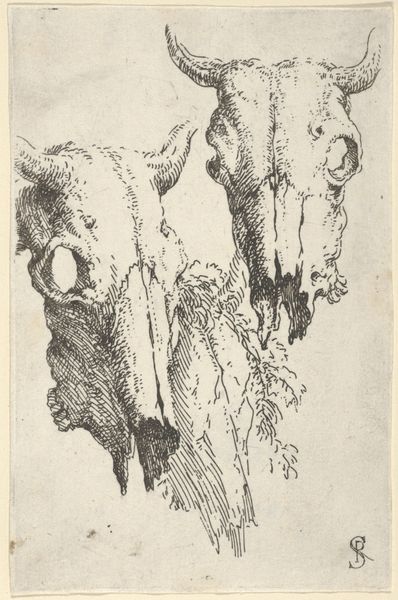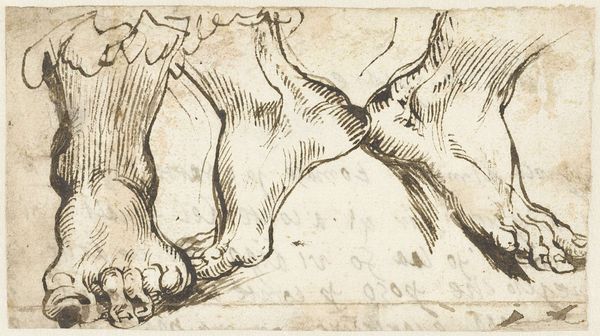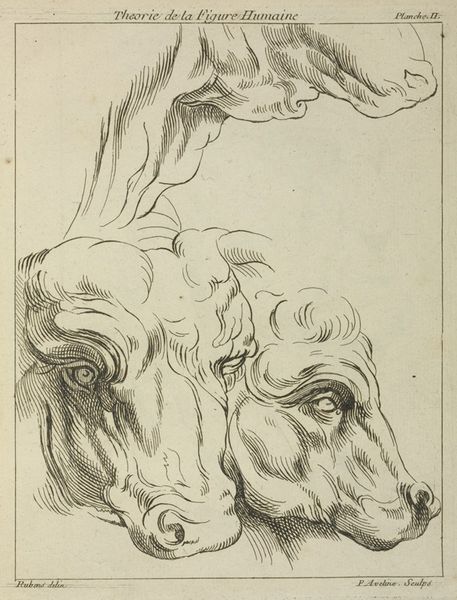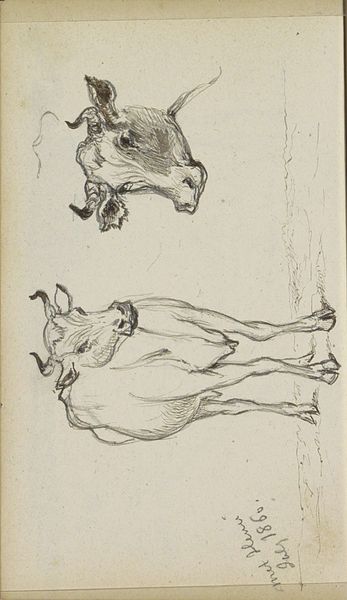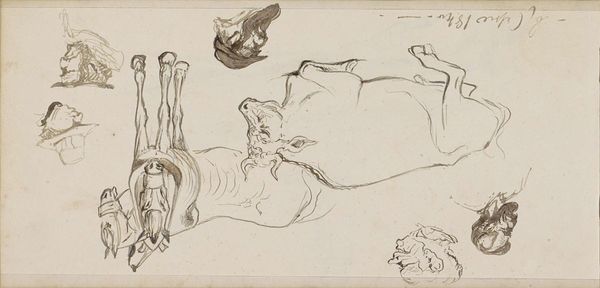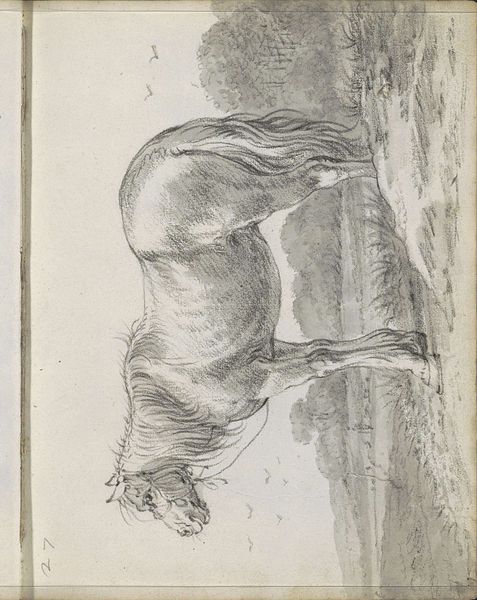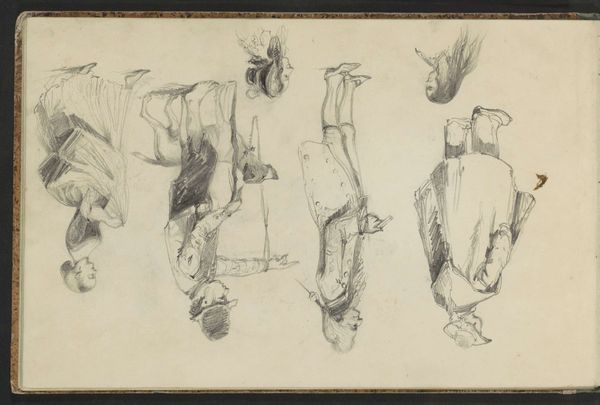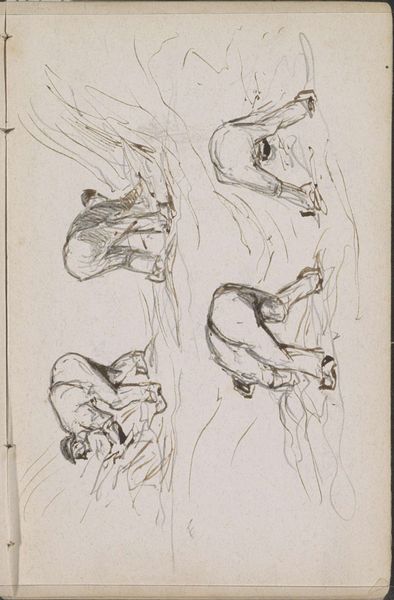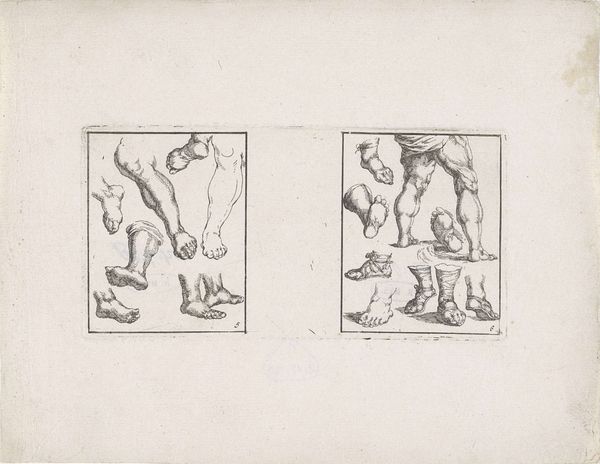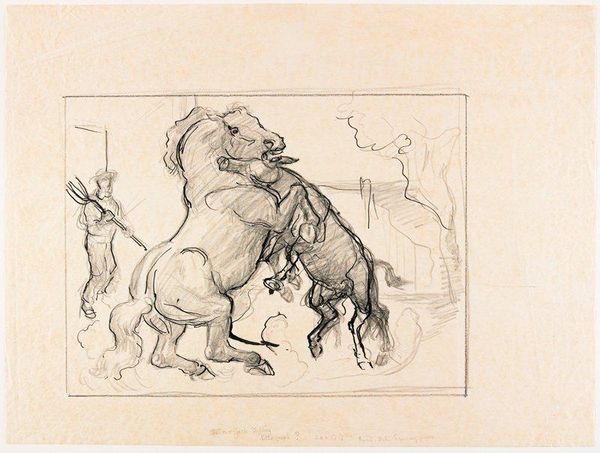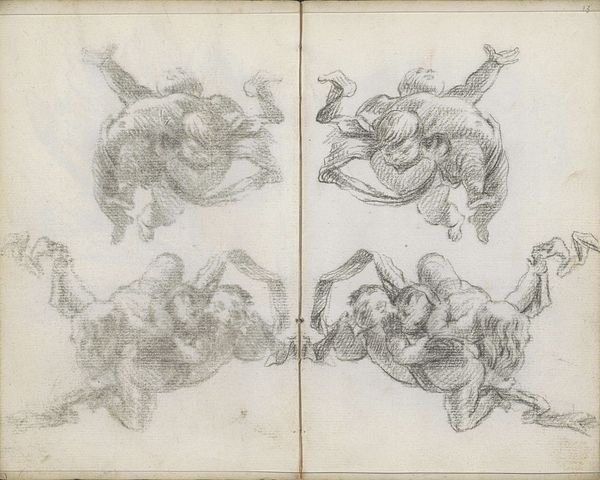
drawing, ink
#
portrait
#
drawing
#
ink drawing
#
narrative-art
#
ink painting
#
figuration
#
ink
#
romanticism
#
history-painting
#
academic-art
Copyright: Public Domain: Artvee
Curator: Before us is Eugène Delacroix’s "Study of Arms and Legs of Christ Crucified," created around 1850. It’s an ink drawing showcasing the artist’s study of the human form in relation to religious iconography. Editor: The drawing immediately strikes me as raw, visceral. The ink rendering is so stark. It makes you aware of how Christ’s physical body was burdened, weighed down by what was to happen to him. The labor of crucifixion. Curator: Precisely. Delacroix's interest in this subject aligns with his Romantic sensibilities. It delves into suffering but also addresses themes related to the political oppression faced by various social groups during this time, evoking the symbolic crucifixion of marginalized populations throughout history. He’s using Christ’s image, one of extreme agony, as an allegory. Editor: Right, the choice of ink lends itself well to that kind of brutal realism, don’t you think? There is an immediate feel of physical sacrifice that is reinforced by that use of basic, easily accessed materials, in the labor involved with the actual drawing. The social context can't be separated from the process. Curator: Delacroix masterfully uses the technique to depict the weight and strain on Christ’s limbs, emphasizing the physical burden and the pain inflicted. Consider the socio-political dimension of the Church at that time and the power structures they employed and then apply it to how certain bodies are continuously punished, surveilled, and commodified. Editor: And he returns repeatedly to those forms; this isn't a finished piece, it is clearly part of a process. What does it mean to practice or represent Christ's pain so intensely, so repetitively? To become familiar with that imagery of that act? Curator: By using Christ, Delacroix perhaps challenges and questions those power structures that have oppressed other bodies historically through his art. It encourages the viewers to consider how systems of oppression affect individuals and society at large, sparking conversations about injustice, resistance, and the importance of speaking truth to power. Editor: Well, whether or not that’s what Delacroix intended, the act of representing labor and materials allows that possibility for reading it into our present moment. Thank you for guiding my view! Curator: Thank you. The dialogue surrounding context certainly enriched my appreciation for its historical and contemporary implications as well.
Comments
No comments
Be the first to comment and join the conversation on the ultimate creative platform.
